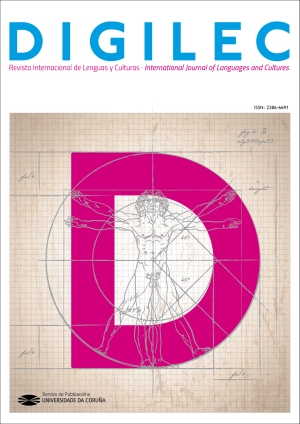Teaching and learning foreign languages in a digitalized context: the case of the Higher Teacher Training College in Yaoundé (Cameroon)
Main Article Content
Abstract
This article deals with the use of mobile devices for the teaching of foreign languages, an increasingly frequent phenomenon both in developing and developed countries. In the current Cameroonian context, and in the Department of Foreign Languages of the Higher Teacher Training College of Yaoundé, we do not have enough didactic materials or adequate equipment for teaching foreign languages through mobile devices. The emergence of the Covid-19 health crisis and the need of carry out distance teaching and learning have highlighted the shortcomings of educational system in this area, and has led us to reflect on the strategies to adopt to remedy this situation. The purpose of this work is to investigate and propose pedagogic strategies in relation with the use of mobile devices and technologies in the processes of teaching and learning foreign languages, in a context where connection to the new communication networks is a luxury. For that, we base our study on some experiences lived in other parts of the world with similar contexts, and suggest that the department of Foreign languages of the Higher Teacher Training College of Yaoundé should take advantage of those strategies and implement them in its context. The methodology adopted in this study is the observation of our environment, and documentary analysis of case studies in countries with contexts similar to ours. To do this, we did a questionnaire addressed to 50 students and 15 teachers from the Department of Foreign Languages. The results of our survey show that both teachers and students adhere to the use of mobile devices in teaching and learning, despite the difficulties related to the context and the insufficiency of adequate means and infrastructures for distance learning.
Keywords:
Downloads
Article Details
References
Attenoukon, S.A. et al. (2015). L’apprentissage avec les supports mobiles dans l’enseignement supérieur au Bénin: analyse des usages des apprenantes. Revue internationale des technologies en pédagogie Universitaire, 12(3), 61-74.
Basantes V. et al. (2017). Los dispositivos móviles en el proceso de aprendizaje de la Facultad de Educación, Ciencia y Tecnología de la Universidad Técnica del Norte Ecuador. Formación Universitaria, 10(2), 79-88.
Cantillo Valero C. et al. (2012). Tendencias actuales en el uso de dispositivos móviles en educación. La Educación, 147, 1-21.
Chacón-Ortiz, M. et al. (2017). Conocimientos sobre aprendizaje móvil e integración de dispositivos móviles en docentes de la Universidad Nacional de Costa Rica. Revista Digital de Investigación en Docencia Universitaria, 11(1), 149-165.
García Aretio, L. (2017). Educación a distancia y virtual: calidad, disrupción, aprendizajes adaptativo y móvil. RIED. Revista Iberoamericana de Educación a Distancia, 20(2), s.p.
Casañ Pitarch, R. (2017). Videojuegos en la enseñanza de lenguas extranjeras: actividades y recursos para el aprendizaje. Tonos Digital, 33, 1-20.
Gutiérrez Martín, A. (1997). Educación multimedia y nuevas tecnologías. Ediciones de la Torre.
Gutiérrez Martín, A. (2007). Integración curricular de las TIC y Educación para los medios en la sociedad del conocimiento. Revista Iberoamericana de Educación, 45(1), 141-156.
Joffre Vicente et al., (2017). Dispositivos móviles como herramientas de apoyo pedagógico en la Educación Superior Ecuatoriana. Revista Atlante: Cuadernos de Educación y Desarrollo, s.p. En línea: htlíneaww.eumed.net/rev/atlante/2017/10/dispositivos-moviles-educacion.html, Fecha de consulta 25/01/2020.
Mangisch Moyano, G. C. y Mangisch Spinelli, M. R. (2020). El uso de los dispositivos móviles como estrategia educativa en la universidad. RIED. Revista Iberoamericana de Educación a Distancia, 23(1), 201-222.
Sigalés, C. (2002). El potencial interactivo de los entornos de enseñanza y aprendizaje en la Educación a Distancia. En M.G. Ortiz y M.S. Pérez (comps.). Hacia la construcción de la sociedad del aprendizaje. México, Universidad de Guadalajara.
Silva Calpa A. C. y Martínez Delgado, D. G. (2017). Influencia del Smartphone en los procesos de aprendizaje y enseñanza. Suma de Negocios, 8, 11-18.


